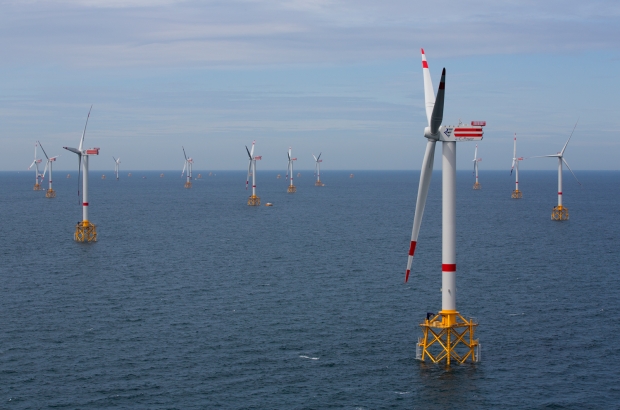- Daily & Weekly newsletters
- Buy & download The Bulletin
- Comment on our articles
North Sea as green energy power player: Summit in Ostend lays out big ambitions
The North Sea will become "Europe’s largest green energy powerhouse" if the ambitions of the second North Sea summit in Ostend this week are realised.
Participants in this year’s summit included Belgium, Denmark, Germany and the Netherlands, plus four new countries: France, Great Britain, Norway and Luxembourg.
Last year, Belgium, Denmark, Germany and the Netherlands set the goal of quadrupling their combined offshore power generation capacity to at least 150 gigawatts by 2050.
For comparison, Belgium’s currently operating nuclear power plants provide 4 GW and its North Sea wind farms produce 2.3 GW, with a target of tripling by 2030 or more.
Belgium is the main driver behind the summit project, with prime minister Alexander De Croo (Open Vld) serving as host and explaining that the bar is set very high.
“By joining forces, we’ll accelerate the energy transition, strengthen our technological leadership and provide millions of households and businesses in Europe with low-carbon energy,” De Croo said on Twitter, emphasising that investment in offshore energy will also create jobs.
“During this summit we want to think together about how we can make even better use of renewable energy at sea. The ultimate goal is to make Europe less dependent on fossil fuels, such as natural gas, oil and coal.”
The North Sea already generates wind power via ocean turbines – efforts that summit actors hope to expand. In February, which saw stormy weather, the North sea accounted for 15% of Belgium’s electricity.
The aim is to link up various offshore sites to better meet demand, while moving away from dependence on gas and fossil fuels. Drastically increasing the production capacity in the North Sea is the first step; the second is the interconnection of national capacities.
France has a similar project with Ireland - hence their invitation to the summit - and connecting the two cables would form the basic architecture of the North Sea project.
In view of their growing offshore wind power capacity, Belgium and Denmark are also keen to avoid overproduction and ensure that energy is delivered to where it is needed.
In addition to wind power, Belgium has been innovating since last year with experimental infrastructures for the production of solar energy.
“The North Sea will become the engine of our energy independence,” said Belgium’s North Sea minister Vincent Van Quickenborne.
“Floating solar panels have the potential to generate an additional 1 GW of green energy in the first offshore area. Through this demonstration project, our companies will be able to play a pioneering role in the global development of this technology and contribute to the economic growth that will create new jobs.”
The storage of green electricity was also an issue addressed at the summit, along with the security of energy infrastructure.
Additionally, Belgium plans to build the world’s first energy island, a hub for electricity exchange between its wind farms and interconnections to the mainland.
The island, named Princess Elisabeth, is expected to be completed by mid-2026 and will be located about 45 kilometres from the coast with a target for 2050 of at least 300 GW.
The project is an expensive one at €3.6 billion for TritonLink alone, €1.4 billion of which will come from Belgium – an amount that the network manager Elia intends to pass on to the consumer.
The bill for the Belgian energy island has meanwhile risen from €450 to €600 million, also to be passed on to the end consumer.
Part of the costs (€100 million) is financed by the European Union and the plan will take up to three decades to come to fruition.















